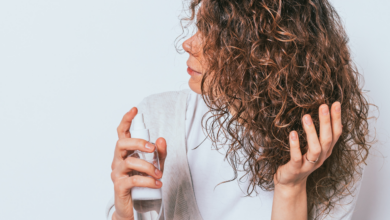
Do you dream of having luscious, healthy hair that shines with vitality? Look no further than Stylish.ae, your ultimate destination to master the art of hair hydration. With their innovative range of products and expert tips, you can say goodbye to dry, lifeless locks. Whether you’re a hair care beginner or a seasoned pro, Stylish.ae has got you covered with their comprehensive guide to achieving and maintaining hydrated hair. From nourishing masks to hydrating serums, they offer a wide array of options tailored to suit your specific needs. Get ready to unlock the secret to beautiful, hydrated hair with Stylish.ae!
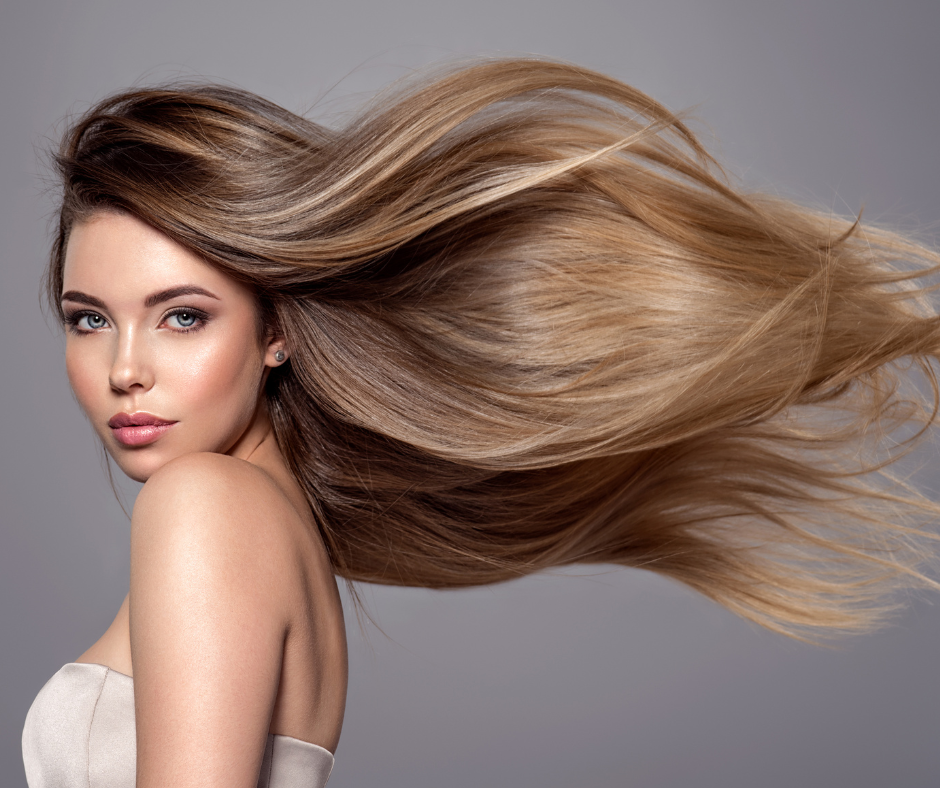
Understanding Hair Hydration
The importance of hair hydration
Hydrating your hair is essential for maintaining its health and vitality. Just like our bodies need hydration to function properly, our hair needs moisture to stay strong, flexible, and lustrous. Dehydrated hair can become brittle, dull, and prone to breakage, which is why it’s crucial to prioritize hair hydration in your hair care routine.
Benefits of hydrating your hair
When you keep your hair adequately hydrated, you can enjoy a plethora of benefits. Hydrated hair is more manageable, making it easier to style and reducing frizz. It also promotes hair growth by providing a nourishing environment for the hair follicles. Additionally, hydrated hair tends to be more resistant to damage from heat styling tools, environmental factors, and chemical treatments. Overall, maintaining proper hair hydration can result in healthier, shinier, and more beautiful hair.
Common factors that lead to hair dehydration
Several factors can contribute to hair dehydration, and being aware of them can help you prevent and address this issue. Excessive washing, especially with harsh sulfates, can strip the hair of its natural oils, leading to dryness. Sun exposure, particularly during summer months, can cause moisture loss and damage to the hair cuticle. Excessive heat styling and the overuse of chemical treatments can also contribute to hair dehydration. Finally, lifestyle factors such as stress, poor diet, and lack of hydration can affect your hair’s moisture levels.
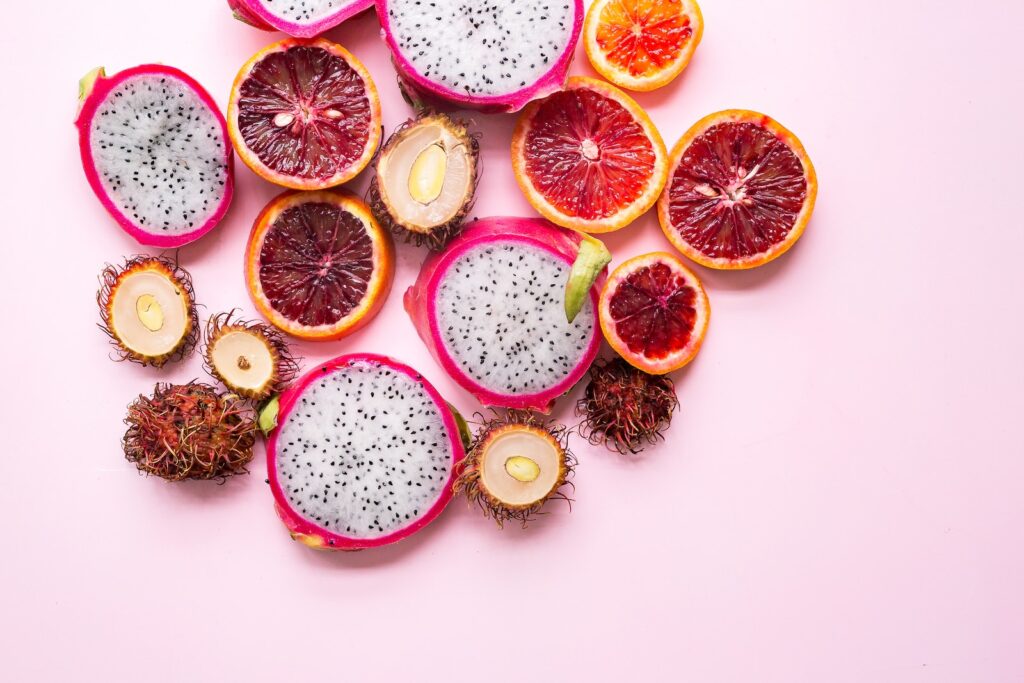
Hair Hydration Techniques
Choosing the right shampoo and conditioner
The foundation of a solid hair hydration routine lies in choosing the right shampoo and conditioner. Look for products that are specifically formulated to hydrate and nourish the hair. Avoid shampoos that contain sulfates, as they can strip the hair of its natural moisture. Opt for gentle, sulfate-free cleansers that will cleanse without compromising hydration. When it comes to conditioner, choose a rich and moisturizing formula that will replenish and seal in hydration.
Using hair masks and treatments
Hair masks and treatments are like supercharged moisturizers for your hair. These deep conditioning treatments provide intense hydration to the hair, helping to repair damage and restore moisture balance. Look for masks that contain ingredients like argan oil, shea butter, or hyaluronic acid, as they are known for their hydrating properties. Incorporate a hair mask into your routine at least once a week to give your hair an extra boost of hydration.
Incorporating leave-in conditioners
Leave-in conditioners are a great addition to your hair hydration routine, as they provide continuous moisture throughout the day. These lightweight formulas are designed to be applied to damp or dry hair, helping to detangle, soften, and protect your hair from dryness. Look for leave-in conditioners that contain hydrating ingredients such as aloe vera, coconut oil, or glycerin. Apply a small amount to your hair before styling to keep it moisturized and protected.
Utilizing hair oils
Hair oils are another effective way to hydrate and nourish your locks. These oils can help seal in moisture, smooth the hair cuticle, and add shine. When choosing a hair oil, consider your hair type and needs. Argan oil and jojoba oil are great options for all hair types, while coconut oil is particularly beneficial for dry and damaged hair. Apply a small amount of oil to the mid-lengths and ends of your hair to keep it hydrated and protected.
Avoiding excessive heat styling
Excessive heat styling can strip your hair of its natural moisture and lead to dehydration. Whenever possible, give your hair a break from heat styling tools such as flat irons, curling irons, and blow dryers. If you do use heat styling tools, make sure to apply a heat protectant spray or serum beforehand to minimize damage and lock in moisture. Opt for lower heat settings and try to limit heat styling to special occasions rather than daily use.

Creating a Hair Hydration Routine
Determining your hair type and needs
Before creating a hair hydration routine, it’s important to determine your specific hair type and needs. Pay attention to your hair’s texture, thickness, and porosity to better understand how it retains and loses moisture. Fine, straight hair may require lighter hydration products, while thick, curly hair may need more intense moisture. Assess any additional concerns, such as damage or color-treated hair, to choose products that address those needs.
Cleansing and conditioning
The foundation of any hair hydration routine is proper cleansing and conditioning. Use a hydrating shampoo to gently cleanse your hair, focusing on the scalp and roots. Be sure to rinse thoroughly to remove any residue. Follow up with a moisturizing conditioner, applying from mid-lengths to ends. Let the conditioner sit for a few minutes before rinsing to maximize hydration. This step helps to replenish moisture and nourish the hair, preparing it for the next steps in the routine.
Weekly deep conditioning treatments
In addition to regular conditioning, incorporate weekly deep conditioning treatments into your hair hydration routine. These treatments provide an extra boost of hydration and nourishment to the hair. Apply a generous amount of a deep conditioning mask or treatment to damp hair, focusing on the mid-lengths to ends. Leave it on for the specified time, allowing it to penetrate and hydrate the hair. Rinse thoroughly and enjoy the benefits of soft, hydrated locks.
Daily moisturizing and sealing
To maintain optimal hair hydration, it’s important to moisturize and seal your hair daily. This step entails applying a leave-in conditioner or moisturizer to damp hair, focusing on the ends and any dry or damaged areas. This helps to lock in moisture and prevent water loss throughout the day. Follow up with a hair oil or serum to seal the hair cuticle, reducing frizz and adding shine. Gently comb through your hair to distribute the products evenly.
Maintenance and protective styles
To further protect and preserve your hair’s hydration, consider incorporating maintenance and protective styles into your routine. These styles help to minimize manipulation and reduce exposure to environmental factors that can lead to moisture loss. Examples of maintenance and protective styles include braids, buns, and updos. When wearing these styles, it’s important to keep your hair moisturized and protected with a satin or silk scarf or bonnet to prevent friction and breakage.

Preventing Hair Dehydration
Avoiding excessive washing
Excessive washing can strip the hair of its natural oils, leading to dehydration. Instead of washing your hair daily, opt for washing every 2-3 days to allow your natural oils to nourish and hydrate the hair. Use a gentle, sulfate-free shampoo that won’t cause further dryness, and focus on cleansing the scalp rather than the lengths of your hair. Applying a dry shampoo between washes can help absorb excess oil and refresh your hair without stripping away moisture.
Protecting hair from sun exposure
Sun exposure can cause damage and moisture loss, leaving your hair dehydrated. When spending time outdoors, protect your hair by wearing a hat or using a leave-in conditioner with UV protection. Consider using a hair mist or spray with SPF specifically formulated for hair. These products provide an extra layer of defense against the sun’s harmful rays, helping to prevent moisture loss and maintain hair hydration.
Using heat protectants
Heat styling tools can be damaging to your hair, leading to moisture loss and dehydration. Whenever you use heat styling tools like flat irons or curling irons, make sure to apply a heat protectant spray or serum. These products create a barrier between your hair and the heat, reducing damage and helping to keep your hair moisturized. Choose a heat protectant that also offers hydration benefits to provide double nourishment to your hair.
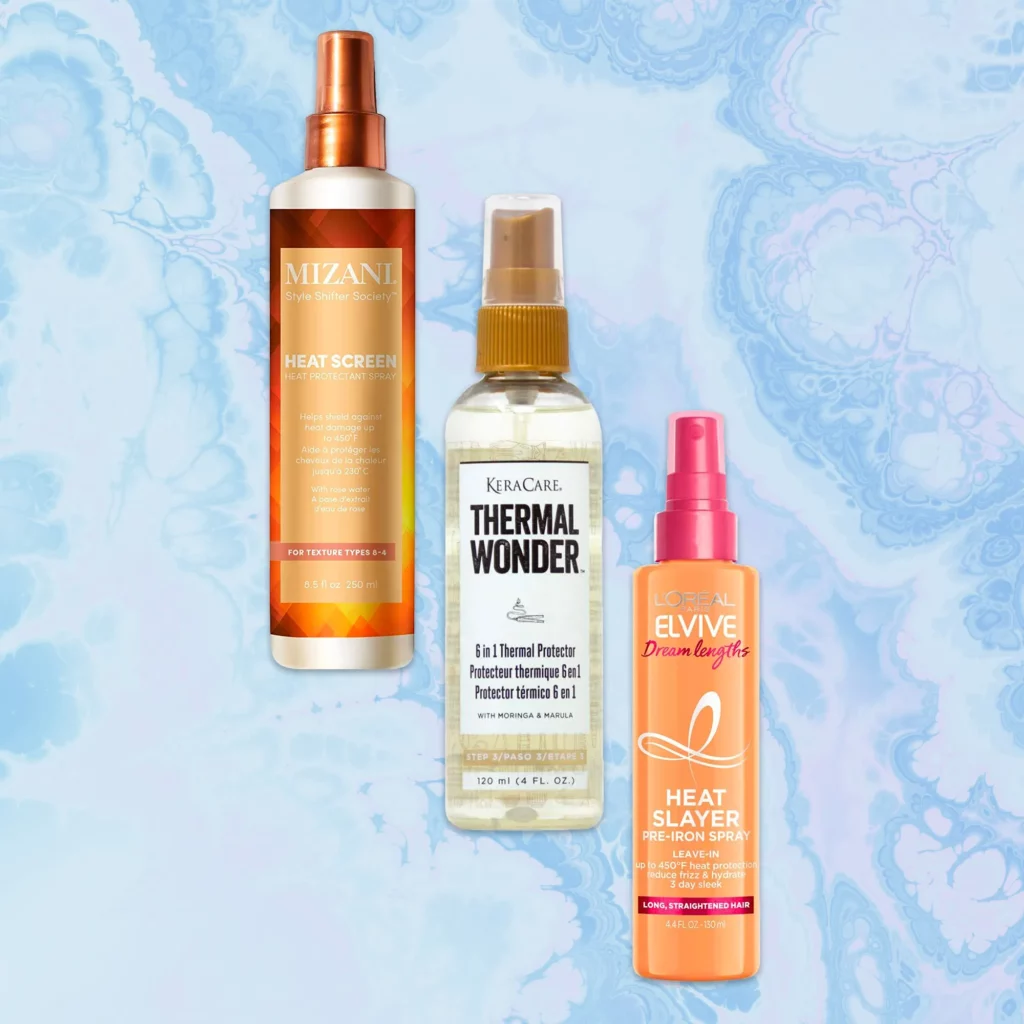
Limiting the use of chemical treatments
Chemical treatments like hair dyes, relaxers, and perms can strip your hair of moisture, leading to dehydration. Limit the use of these treatments and give your hair time to recover and retain its natural moisture. If you must undergo chemical treatments, make sure to follow them up with intense hydration to replenish any moisture loss. Consider consulting with a professional stylist to ensure your hair stays hydrated during and after these treatments.
Maintaining a healthy diet and lifestyle
Hair hydration starts from within, and maintaining a healthy diet and lifestyle can greatly contribute to the overall health of your hair. Make sure to consume a well-balanced diet rich in vitamins, minerals, and essential fatty acids. Stay hydrated by drinking enough water throughout the day, as dehydration can negatively impact your hair’s moisture levels. Reduce stress levels, as stress can affect the hair’s hydration and overall health. Aim for a good night’s sleep to enhance your hair’s natural repair and hydration processes.
The Science Behind Hair Hydration
Understanding the hair structure
To grasp the concept of hair hydration, it’s important to understand the structure of the hair. Each strand of hair contains three layers: the cuticle, cortex, and medulla. The cuticle is the outermost layer, responsible for protecting the hair shaft. The cortex lies beneath the cuticle and contains the hair’s pigment, strength, and moisture content. The medulla is the innermost layer and is not present in all hair types. Understanding this structure helps us comprehend how hydration affects the health and appearance of our hair.
The role of water in hair health
Water is crucial for maintaining hair health as it makes up a significant portion of hair’s composition. The cortex, the layer responsible for hair’s strength and elasticity, contains water molecules that are essential for maintaining its structure. Without adequate hydration, the cortex can become weak and brittle, leading to breakage and damage. Water also helps to regulate the pH balance of the scalp, promoting a healthy environment for hair growth.
How dehydration affects the hair
Dehydration can have a detrimental effect on the hair, compromising its structure and appearance. When the hair lacks moisture, the cortex becomes dry and brittle, causing the hair to lose its elasticity. This makes the hair more prone to breakage, split ends, and overall damage. Dehydration can also lead to a rough, dull, and lackluster appearance, as the cuticle becomes lifted and damaged. It’s crucial to maintain proper hydration to ensure the hair remains strong, flexible, and vibrant.
The importance of the hair cuticle
The hair cuticle plays a vital role in maintaining hair hydration. It consists of overlapping layers of cells that form a protective barrier around the hair shaft. When the hair cuticle is intact and smooth, it helps to retain moisture and prevents water loss from the cortex. However, damage to the cuticle, such as from heat styling or chemical treatments, can cause the cuticle to become lifted and damaged. This leads to moisture loss, making the hair more susceptible to dehydration. Proper hydration helps to keep the cuticle smooth and intact, ensuring the hair retains its moisture and remains healthy.
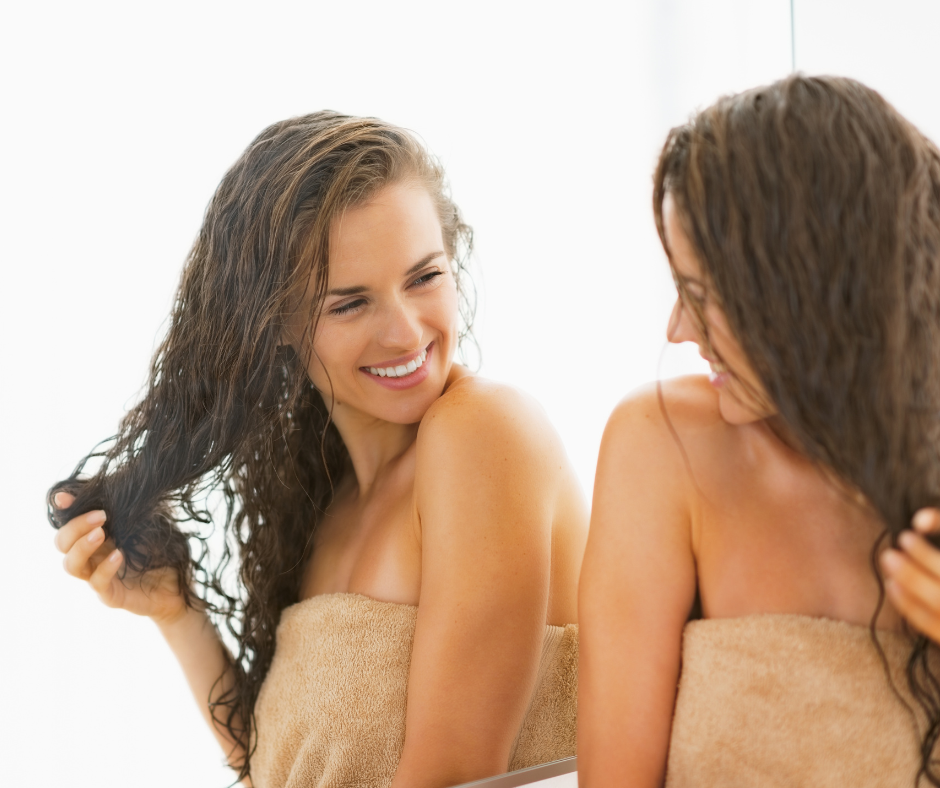
Tips for Effective Hair Hydration
Drinking enough water
One of the simplest yet most effective tips for hair hydration is ensuring you drink enough water. When you are adequately hydrated on the inside, it reflects on the outside, including your hair. Drinking at least eight glasses of water a day helps maintain your scalp’s moisture and supports the overall health of your hair. Make it a habit to keep a water bottle with you throughout the day and sip on water regularly to stay hydrated.
Using lukewarm water for hair washing
Hot water can strip your hair of its natural oils and lead to dehydration. When washing your hair, opt for lukewarm water instead of hot water. Lukewarm water can effectively cleanse your hair without causing excessive dryness. It also helps to open up the hair cuticle, allowing for better absorption of hydrating products. When rinsing out conditioner or hair masks, use cool water to seal the cuticle and lock in moisture.
Avoiding excessive towel drying
Vigorously towel drying your hair can cause friction and damage, leading to moisture loss. Instead of rubbing your hair with a towel, gently squeeze out excess water after washing. If possible, opt for a microfiber towel or an old t-shirt, as these are softer and gentler on the hair cuticle. Allow your hair to air dry partially before using a blow dryer on a low heat setting or opting for other styling methods.
Reducing the use of heat styling tools
Heat styling tools can cause damage and dehydration to your hair. To maintain hair hydration, consider reducing the use of heat styling tools. Embrace your natural hair texture and opt for heatless hairstyles. If you do need to use heat styling tools occasionally, always apply a heat protectant beforehand to minimize damage. Use lower heat settings and limit the exposure time to reduce moisture loss and maintain hair hydration.
Protecting hair during sleep
While we sleep, our hair can become tangled and prone to breakage, leading to moisture loss. To protect your hair’s hydration during sleep, invest in a satin or silk pillowcase or wrap your hair in a silk or satin scarf or bonnet. These materials create a smooth surface that minimizes friction and prevents moisture loss from your hair. Additionally, tying your hair in a loose braid or bun can help preserve your hair’s moisture and prevent tangling.
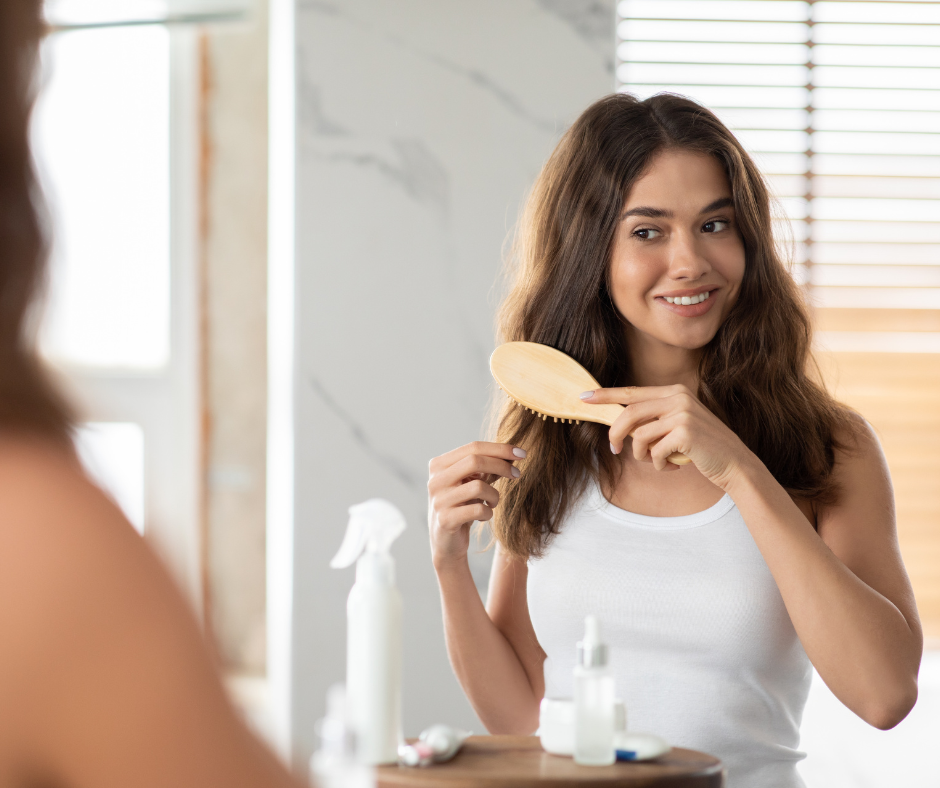
Hair Hydration Myths Debunked
Myth: Oily hair doesn’t need hydration
Contrary to popular belief, oily hair still needs hydration. When your scalp produces excess oil, the hair itself can still lack moisture. Overwashing or using harsh cleansers to combat oiliness can disrupt the natural oil balance and strip your hair of moisture. Opt for hydrating shampoos that gently cleanse without causing excessive dryness, and ensure you properly moisturize the mid-lengths and ends of your hair, focusing on the areas that need hydration.
Myth: Hydration is only necessary for dry hair
Hydration is important for all hair types, not just dry hair. Even individuals with naturally oily hair can experience dehydration or damage due to external factors. Proper hydration helps maintain hair health, regardless of your hair type. It’s all about finding the right balance and choosing products that suit your specific needs.
Myth: Hydrating products weigh down the hair
This myth couldn’t be further from the truth. Hydrating products are designed to nourish and moisturize the hair without weighing it down. High-quality hydrating products, like those offered by stylish.ae, are formulated with lightweight ingredients that penetrate the hair shaft without leaving a heavy residue. When using the right products for your hair type, you can enjoy the benefits of hydration without sacrificing volume or manageability.
Myth: Hydration can fix all hair issues
While proper hydration is essential for maintaining healthy hair, it cannot single-handedly fix all hair issues. Other factors such as genetics, hormonal imbalance, and damage from excessive heat or chemical treatments can also contribute to hair problems. It’s important to address these issues individually while incorporating hydration into your hair care routine. Combining effective hydration techniques with targeted solutions for specific concerns will yield the best results.
Myth: Hair hydrating treatments are expensive
Contrary to popular belief, hair hydrating treatments don’t have to break the bank. Stylish.ae, for example, offers a range of affordable and effective hair care products for all budgets. Additionally, there are many DIY remedies and natural ingredients that you can incorporate into your routine to achieve hydration without spending a fortune. Remember, investing in quality hair care products and treatments is an investment in the long-term health and beauty of your hair.
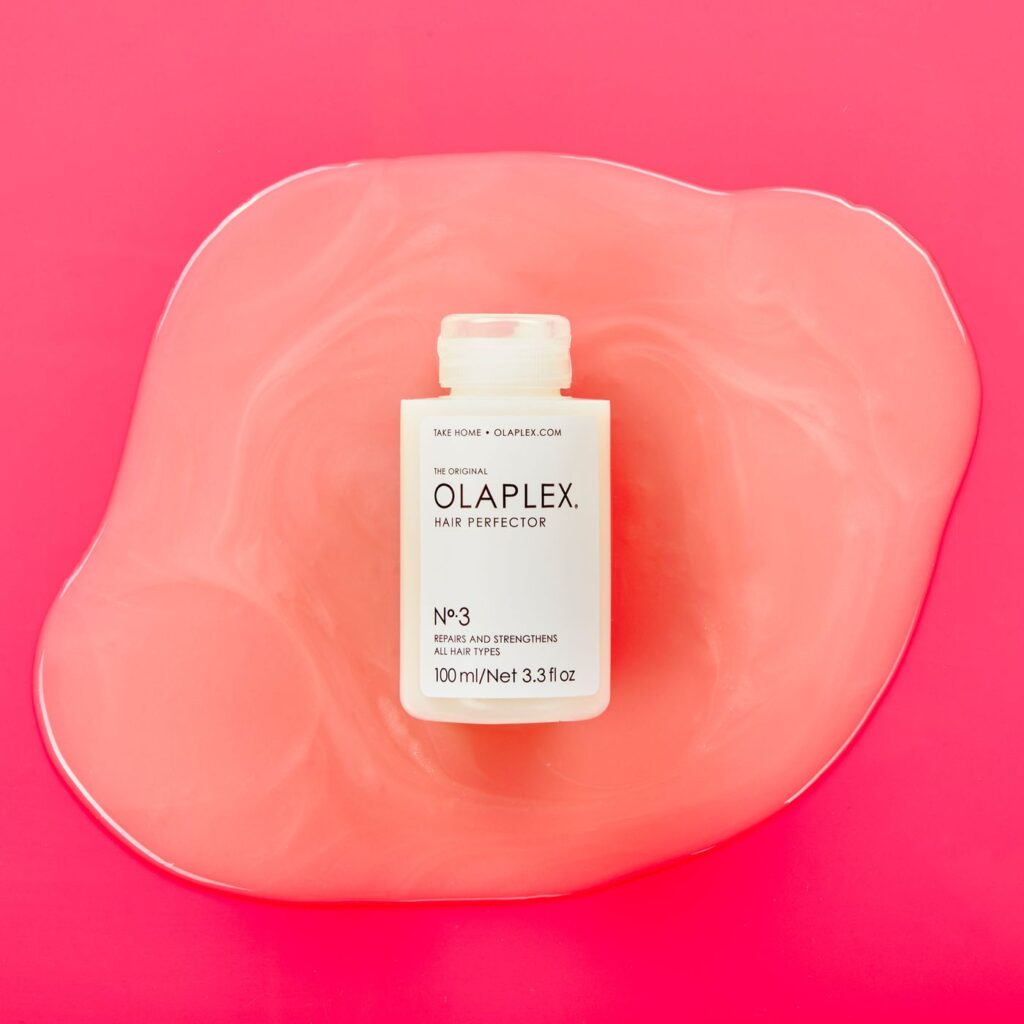
Common Hair Hydration Mistakes to Avoid
Using harsh sulfates
Sulfates are common ingredients found in many shampoos, but they can be harsh and stripping to the hair. Avoid using shampoos that contain sulfates as they can strip away your hair’s natural moisture and contribute to dehydration. Opt for gentle, sulfate-free shampoos that cleanse without compromising hydration.
Over-washing the hair
Washing your hair daily or too frequently can strip away natural oils and cause dehydration. Strive to wash your hair every 2-3 days to allow your scalp’s natural oils to nourish and hydrate your hair. If you feel the need to freshen up between washes, reach for a dry shampoo or consider co-washing, which involves using conditioner to cleanse the hair instead of shampoo.
Skipping conditioning
Conditioning is a crucial step in maintaining hair hydration. Skipping conditioner can leave your hair dry, dull, and prone to breakage. Make sure to apply a moisturizing conditioner after shampooing to replenish moisture, smoothen the hair cuticle, and enhance the overall hydration and manageability of your hair.
Neglecting regular trims
Regular trims are essential for maintaining the health and hydration of your hair. Split ends and damaged hair can prevent proper hydration from reaching the length of your hair. Schedule regular trims every 6-8 weeks to remove split ends and promote healthy hair growth. This will ensure that your hair remains hydrated and free from damage.
Using the wrong products for your hair
Using products that are not suitable for your hair type or needs can lead to dehydration and other issues. It’s important to choose products specifically designed for your hair type and concerns. Consider factors like hair texture, thickness, and porosity when selecting products. When in doubt, consult with a professional stylist or do thorough research to find the best products for your hair’s hydration needs.

Achieving Healthy and Hydrated Hair
Consistency is key
Consistency is key when it comes to achieving and maintaining healthy, hydrated hair. Building a hair hydration routine and sticking to it will yield the best results. Be diligent in using hydrating products, incorporating deep conditioning treatments, and following the tips and techniques outlined in this article. Over time, your hair will become stronger, more resilient, and beautifully hydrated.
Pampering your hair
In addition to the necessary steps for hair hydration, don’t forget to pamper your hair occasionally. Treat yourself to a spa day for your hair by indulging in a hair mask or treatment, giving your locks some extra TLC. Use this time to relax and unwind, knowing that you are nourishing your hair and promoting its health and hydration.
Tailoring your routine to your lifestyle
Lastly, it’s crucial to tailor your hair hydration routine to fit your lifestyle. Each person has unique needs and constraints, so adapt your routine accordingly. If you lead an active lifestyle and sweat often, you may need to wash your hair more frequently. If you’re constantly exposed to sun or environmental factors, amp up your hydration and protection techniques. Find what works best for you and customize your routine to ensure maximum hydration and hair health.

